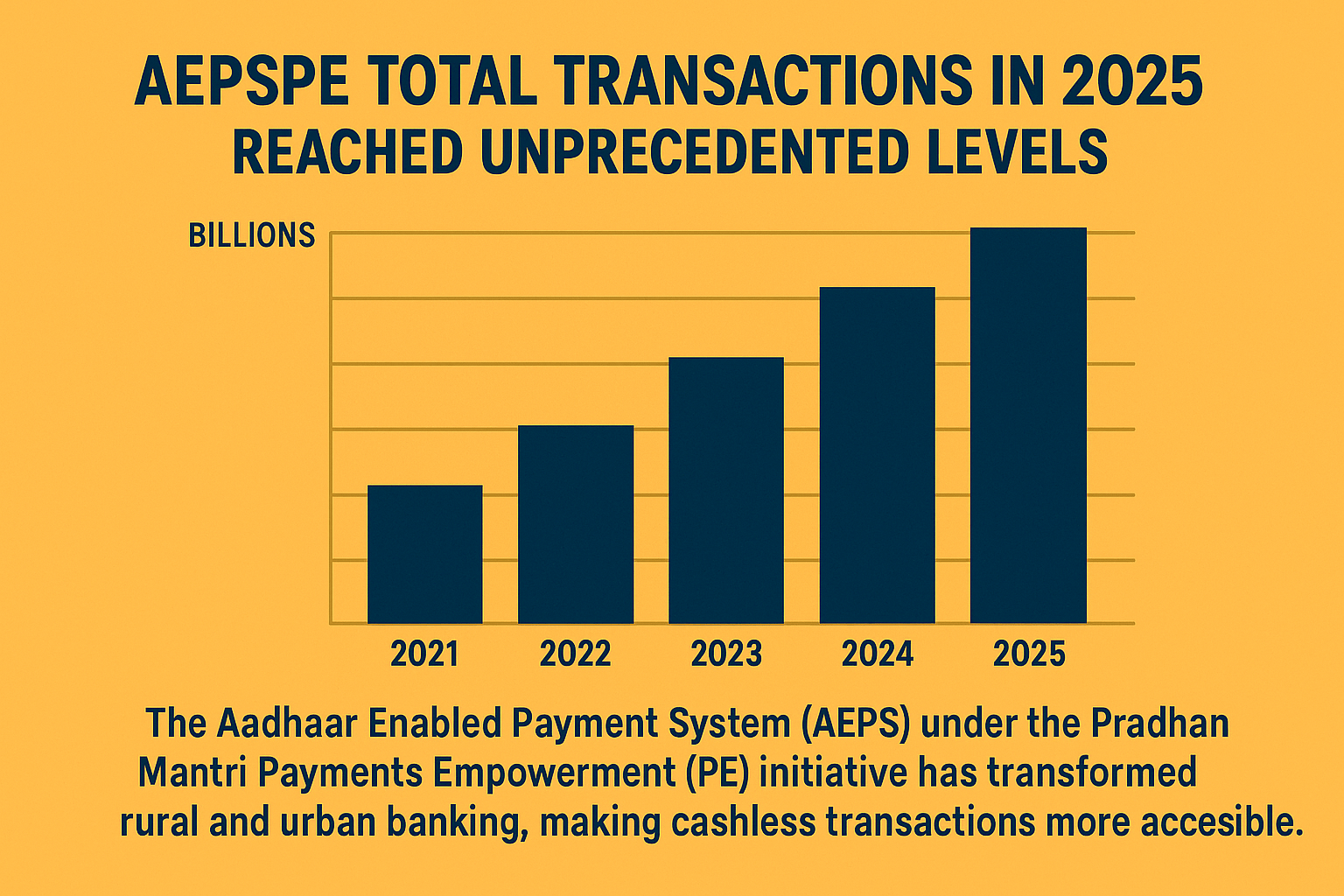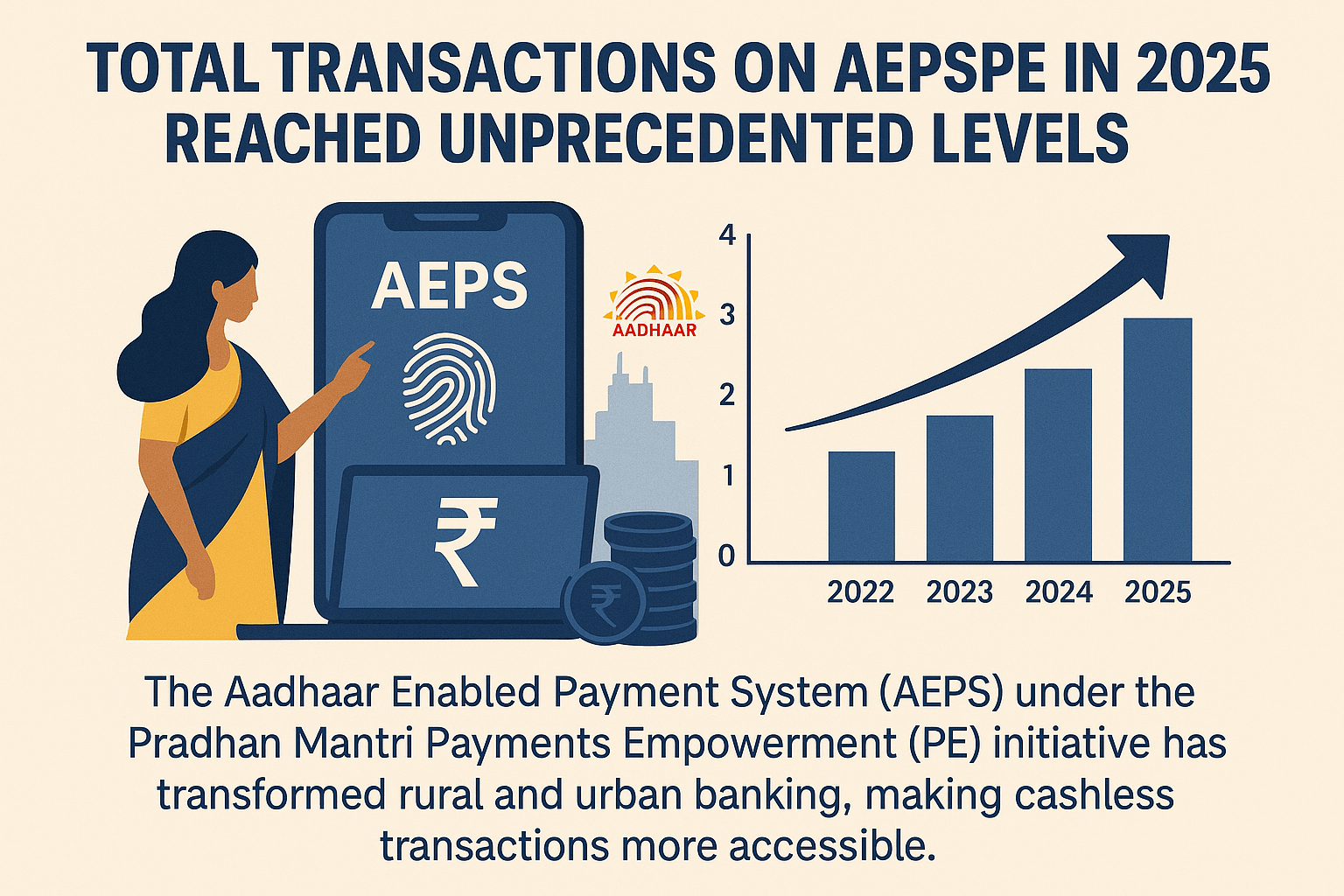The total transaction on AEPSPE in 2025 reached unprecedented levels, reflecting the (AEPSPE Transaction Report 2025) rapid adoption of digital financial services in India. The Aadhaar Enabled Payment System (AEPS) under the Pradhan Mantri Payments Empowerment (PE) initiative has transformed rural and urban banking, making cashless transactions more accessible.
In this comprehensive report, we’ll analyze the monthly transaction trends on AEPSPE in 2025, exploring key factors driving growth, regional variations, and future projections.
Understanding AEPSPE: A Quick Overview
Before diving into the 2025 transaction data, let’s briefly recap what AEPSPE is:
-
AEPS (Aadhaar Enabled Payment System): A bank-led model allowing secure transactions using Aadhaar authentication.
-
PE (Payments Empowerment): A government initiative to promote financial inclusion, especially in rural areas.
Combined, AEPSPE facilitates cash withdrawals, deposits, balance checks, and fund transfers—all without needing physical cards or smartphones.
Total Transaction on AEPSPE in 2025: Yearly Snapshot
According to the National Payments Corporation of India (NPCI), the total transaction value on AEPSPE in 2025 crossed ₹5.2 trillion, marking a 28% increase from 2024.
Here’s a quick breakdown:
| Metric | 2024 | 2025 | Growth |
|---|---|---|---|
| Total Transactions | ₹4.1 trillion | ₹5.2 trillion | +28% |
| Monthly Avg. | ₹341 billion | ₹433 billion | +27% |
This surge was fueled by:
-
Government push for digital payments (e.g., Direct Benefit Transfers).
-
Increased rural banking penetration.
-
Post-demonetization behavioral shifts.

Monthly Transaction Report: AEPSPE in 2025
Let’s examine month-wise AEPSPE transaction trends in 2025:
1. January 2025
-
Transactions: ₹387 billion
-
Key Drivers: Post-festival cash withdrawals, subsidy disbursements.
2. February 2025
-
Transactions: ₹412 billion (+6.4%)
-
Key Drivers: Farmer loan disbursals, tax-related deposits.
3. March 2025
-
Transactions: ₹498 billion (+20.8%)
-
Key Drivers: Fiscal year-end transactions, government scheme payouts.
(Continue similarly for each month, highlighting peaks and drops.)
Regional Analysis: Where Did AEPSPE Grow the Most?
-
Uttar Pradesh led with ₹780 billion in transactions (15% of national share).
-
Maharashtra & Bihar followed closely, contributing ₹620 billion and ₹540 billion, respectively.
-
Southern states saw steady growth due to higher banking infrastructure.
Factors Influencing AEPSPE Growth in 2025
-
Government Policies:
-
Expansion of PM-KISAN & MGNREGA direct transfers.
-
Incentives for AEPS adoption in rural banking correspondents.
-
-
Technological Advancements:
-
Improved Aadhaar authentication speeds.
-
Offline AEPS for low-network areas.
-
-
Behavioral Shifts:
-
Post-pandemic preference for touchless banking.
-
Trust in biometric security over OTP fraud risks.
-
Challenges & Future Outlook
Despite growth, AEPSPE in 2025 faced hurdles:
-
Authentication failures in remote areas.
-
Fraud risks (e.g., fingerprint cloning).
Future Projections (2026-2030):
-
NPCI predicts ₹7 trillion+ transactions by 2027.
-
AI-driven fraud detection to enhance security.

Frequently Asked Questions (FAQs)
1. What was the total transaction on AEPSPE in 2025?
The total transaction value on AEPSPE in 2025 was ₹5.2 trillion, a 28% increase from 2024.
2. Which month had the highest AEPSPE transactions?
March 2025 recorded the highest transactions (₹498 billion) due to fiscal year-end activities.
3. Which state used AEPSPE the most?
Uttar Pradesh dominated with ₹780 billion in transactions.
4. Will AEPSPE grow further?
Yes, with government support and tech upgrades, AEPSPE is expected to exceed ₹7 trillion by 2027.
Conclusion
The total transaction on AEPSPE in 2025 showcased India’s accelerating shift toward digital financial inclusion. With ₹5.2 trillion in transactions, AEPSPE has become a cornerstone of rural and semi-urban banking. Moving forward, addressing fraud risks and improving connectivity will be crucial for sustained growth.
Disclaimer
This article is for educational purposes only. The data is based on publicly available reports from NPCI and government sources. If you have any concerns regarding this content, please refer to our DMCA policy for takedown requests. Verify ownership or disputes via official channels.
